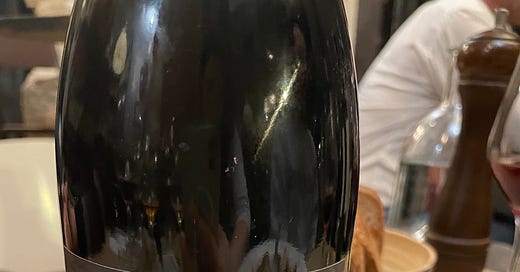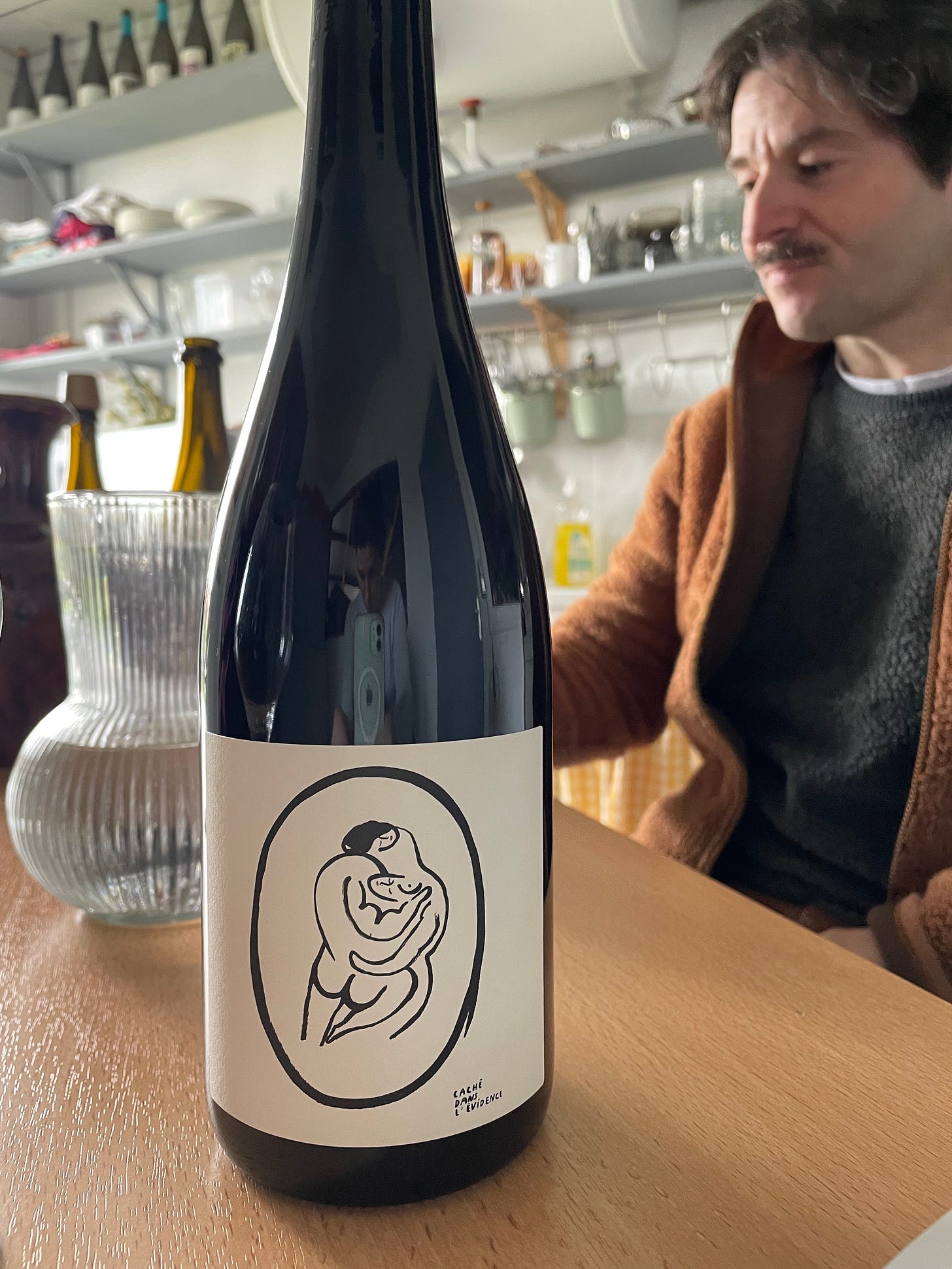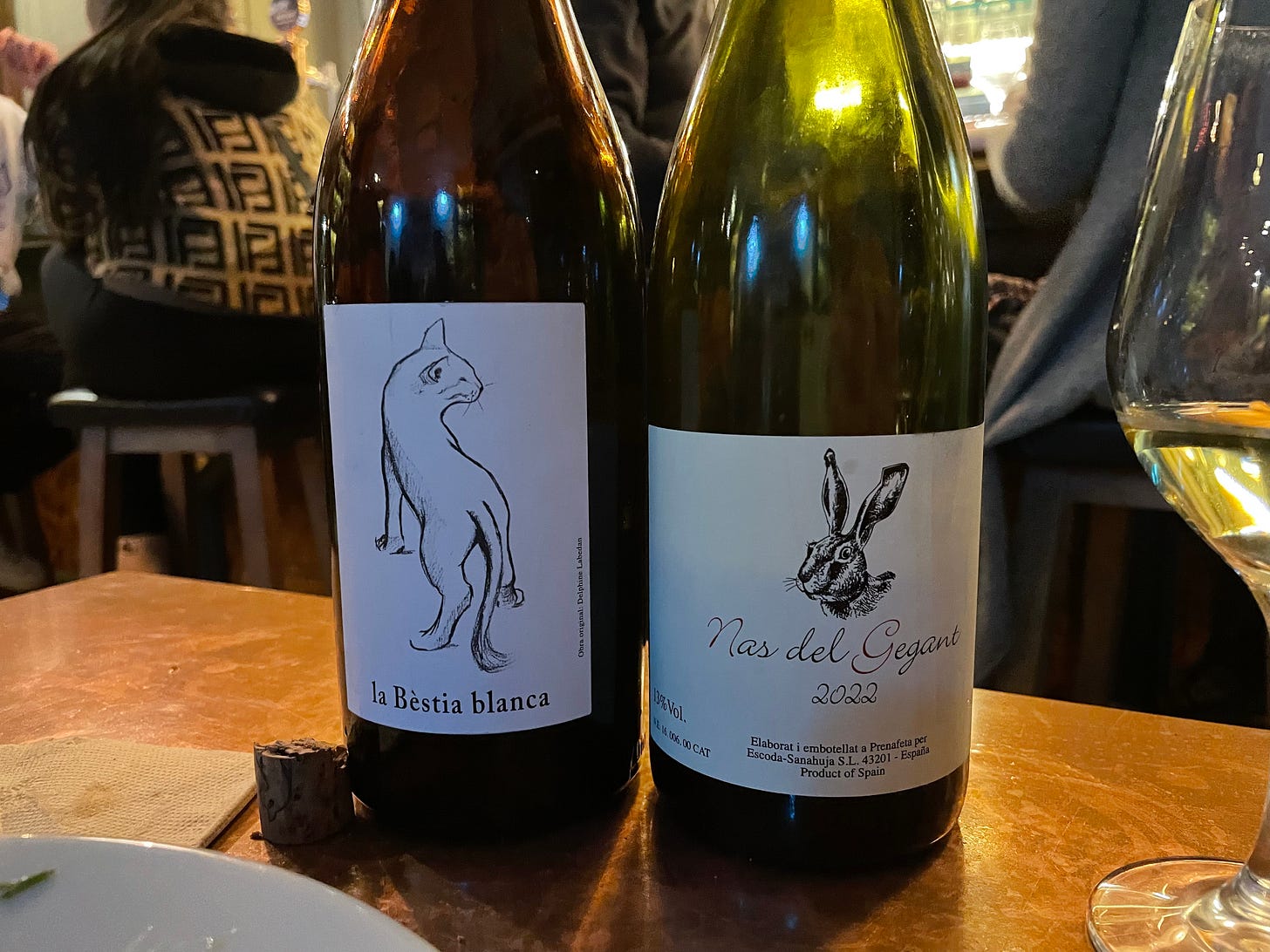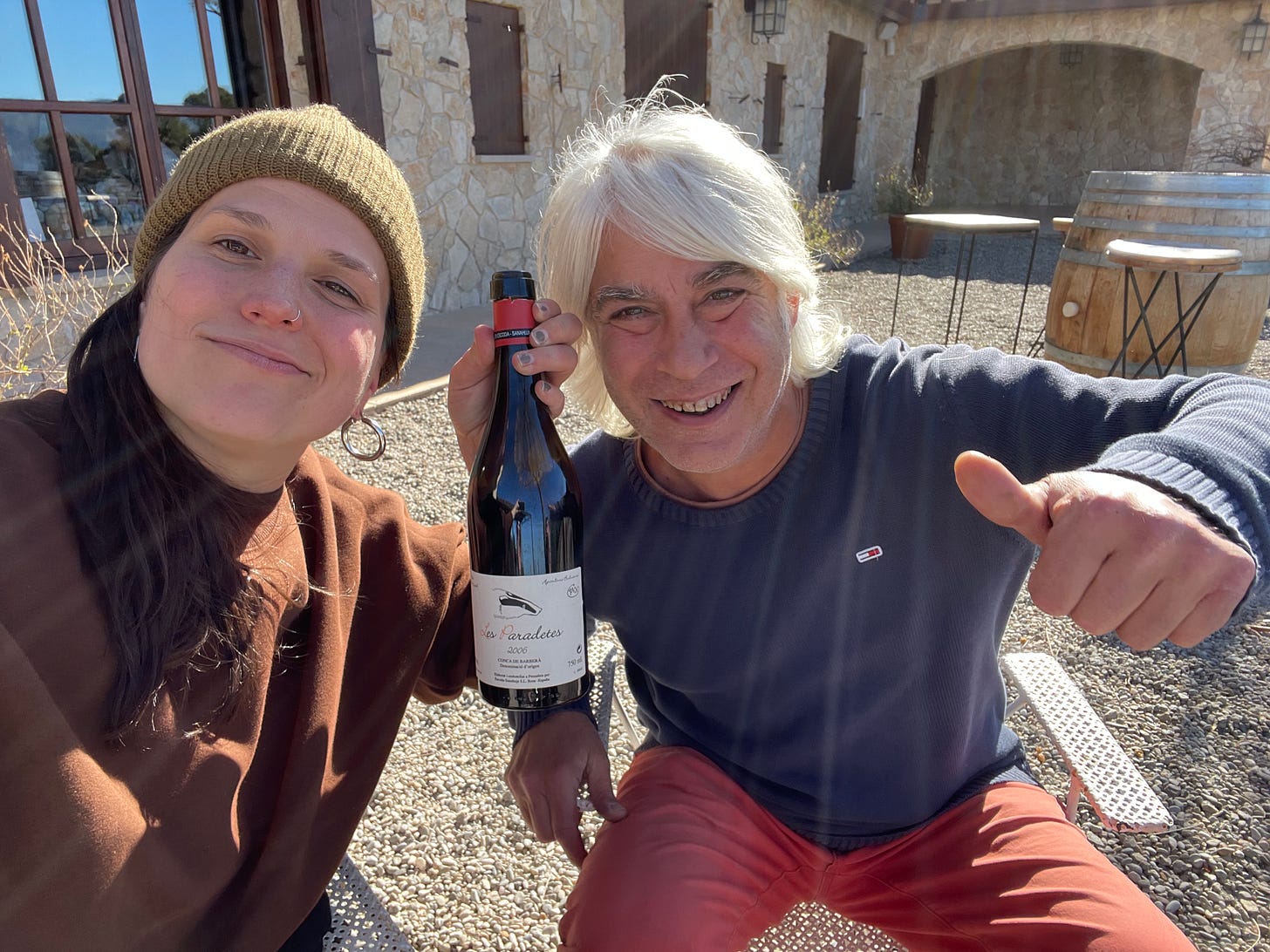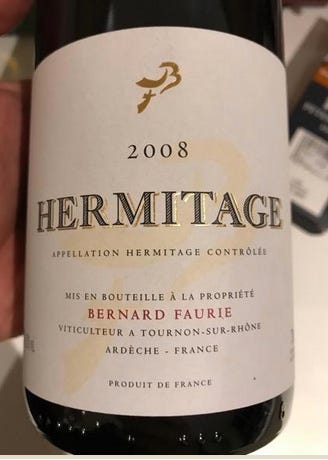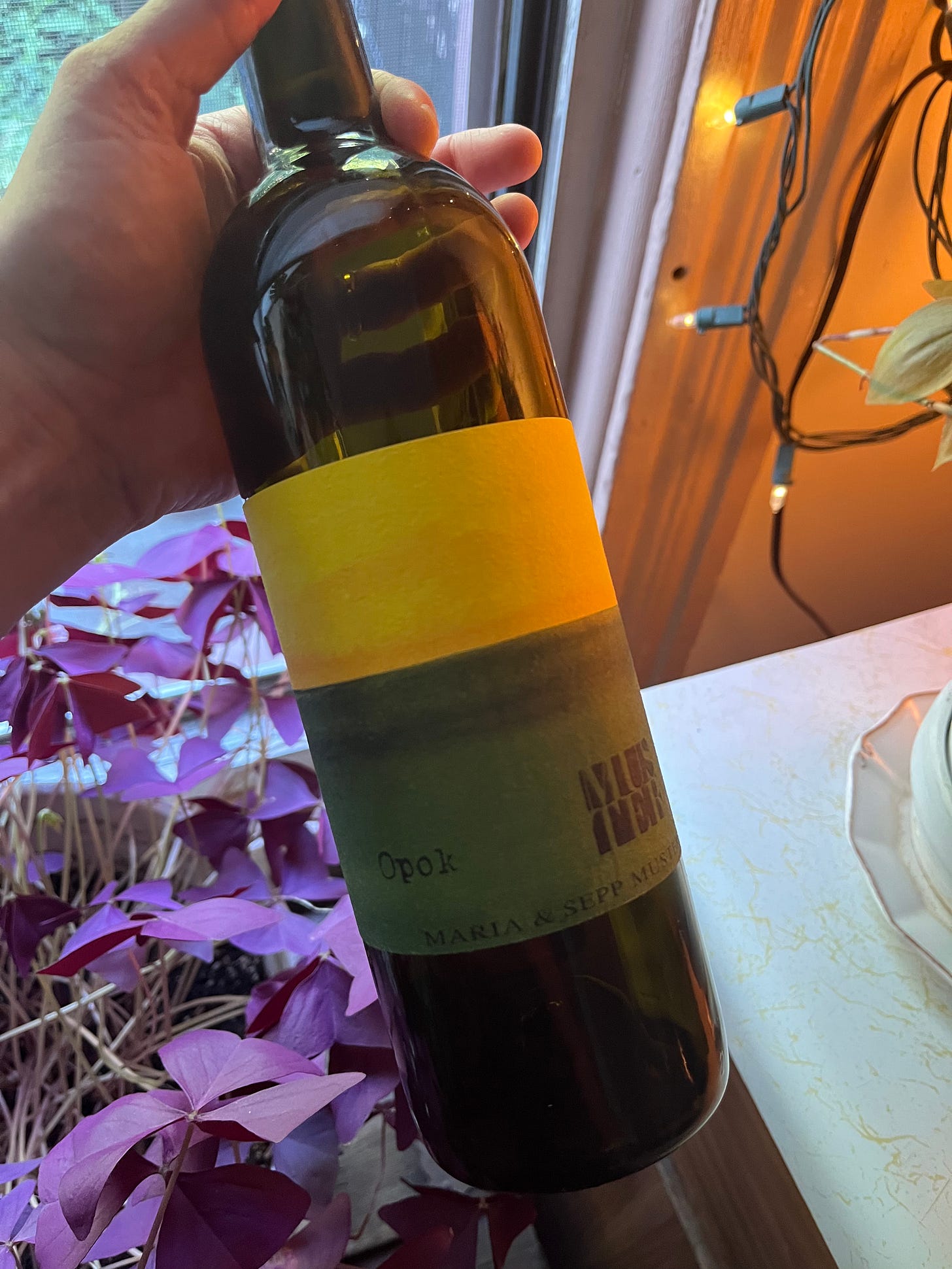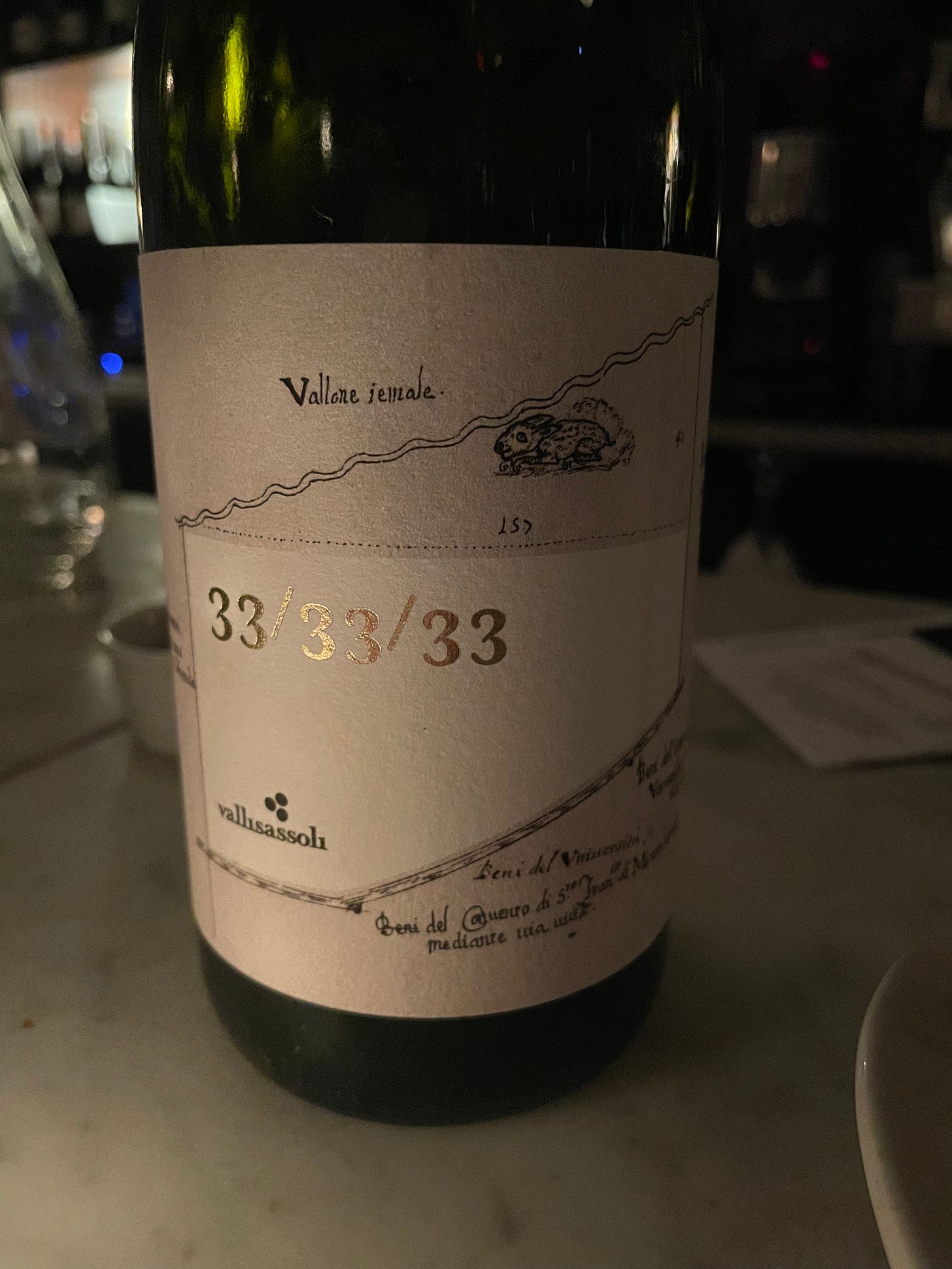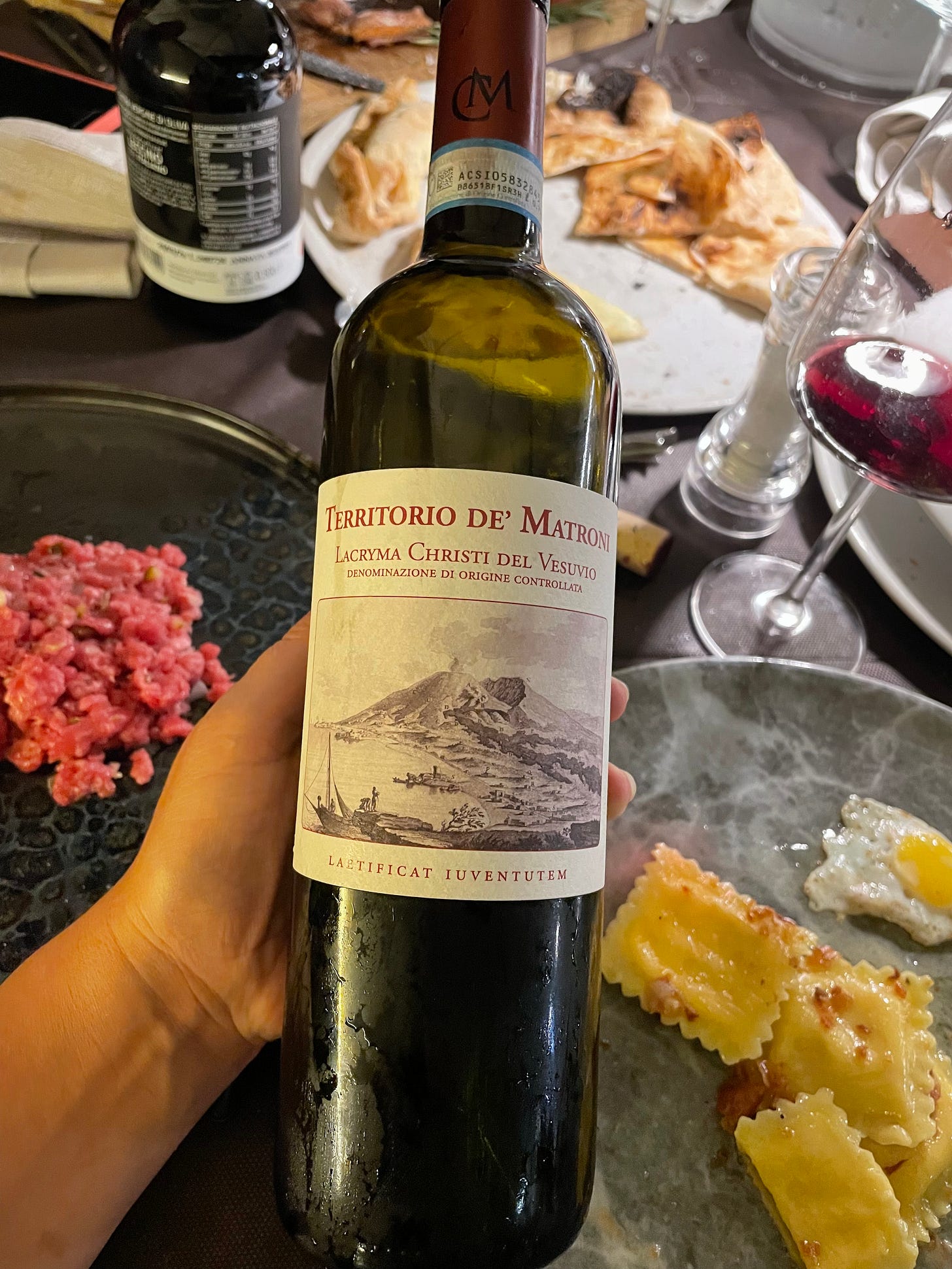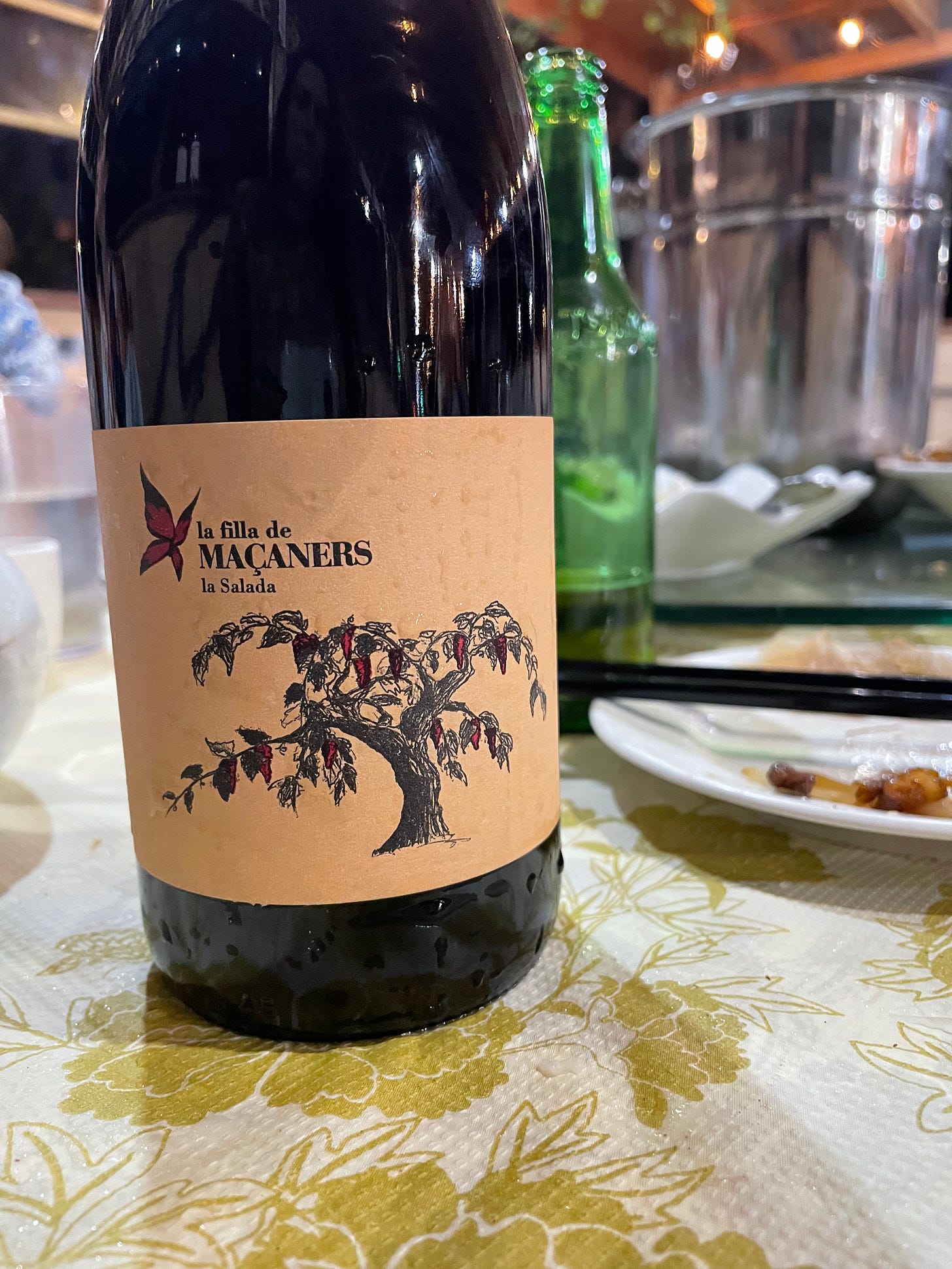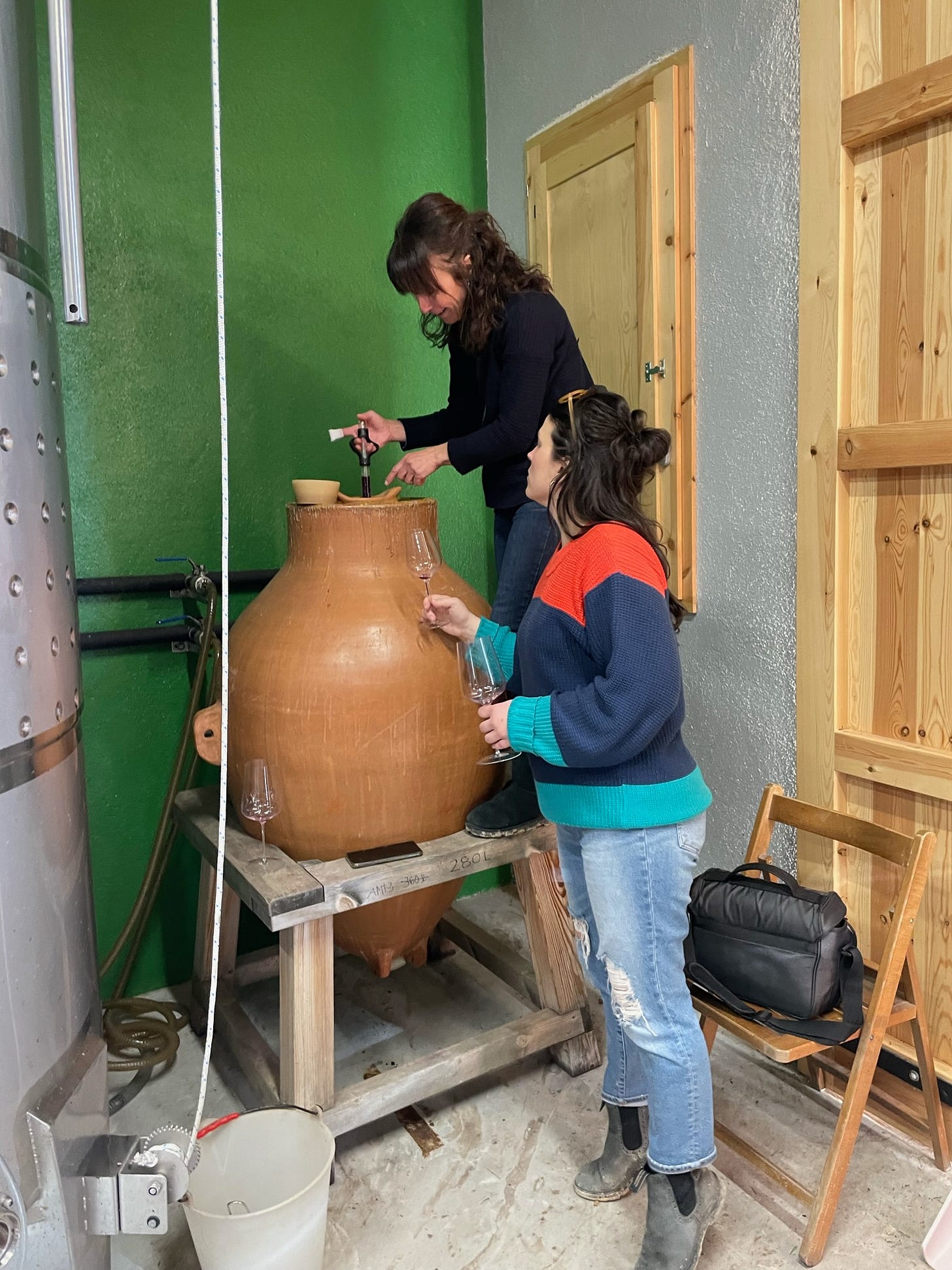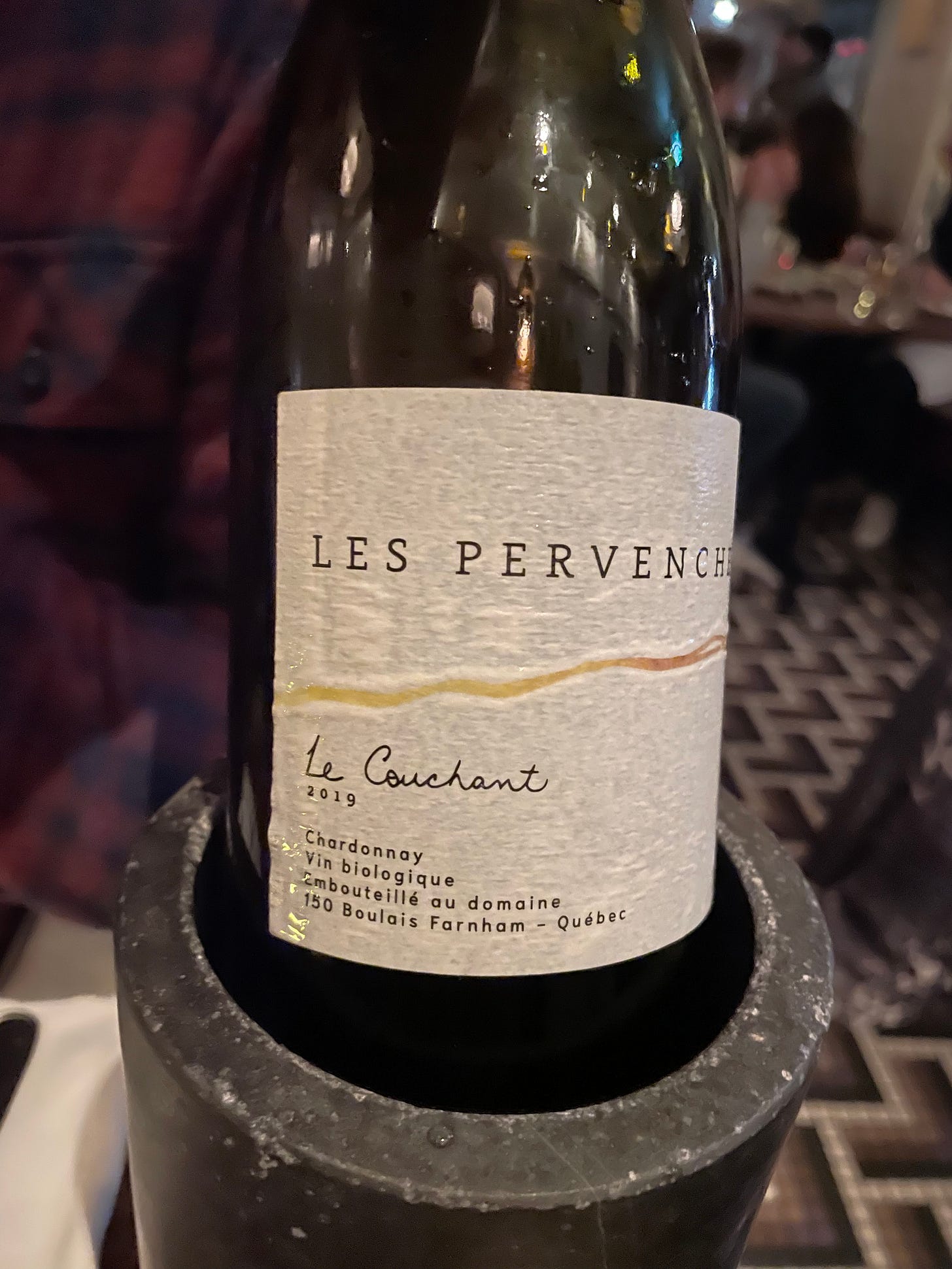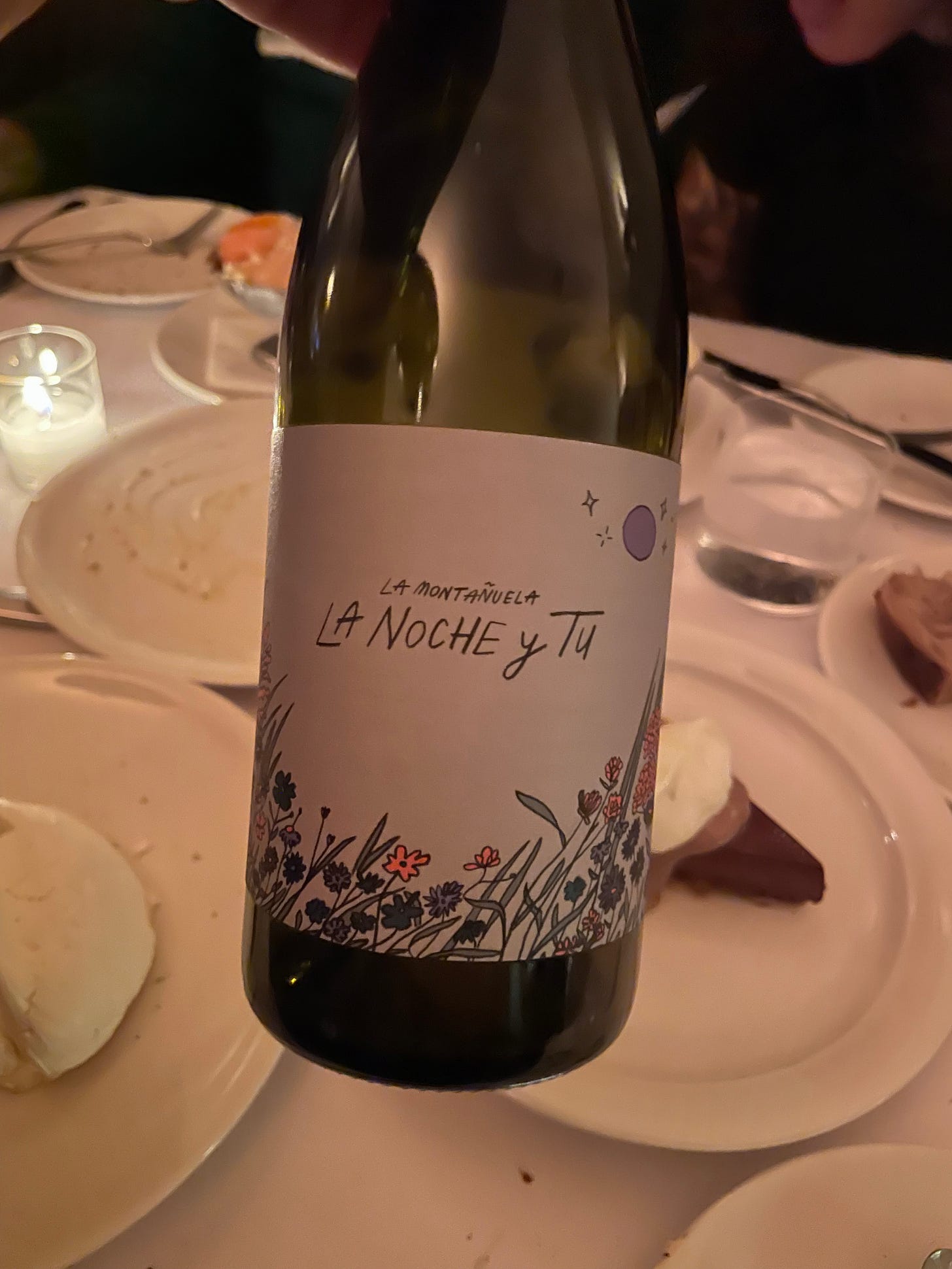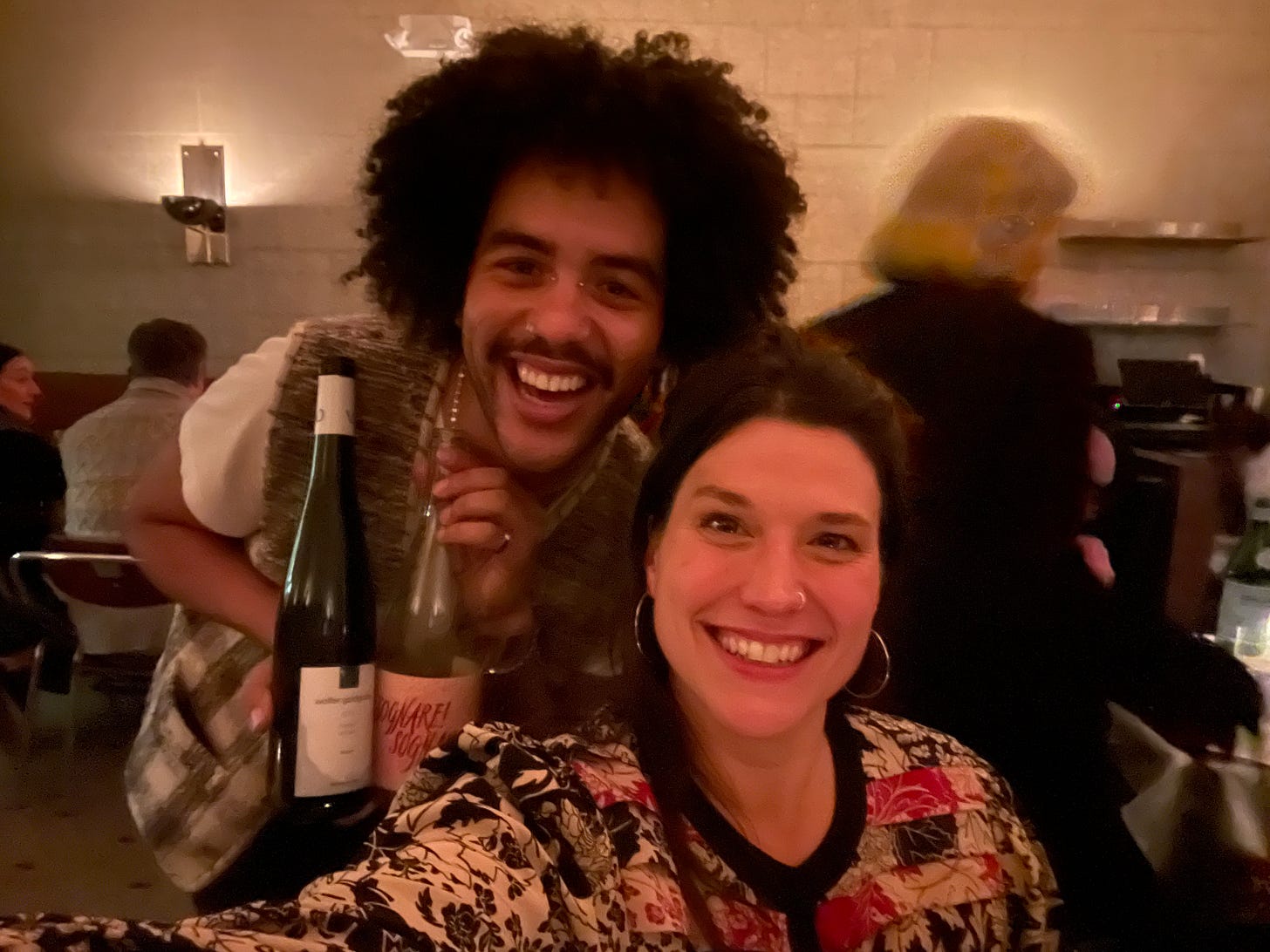I have decided to write a top-ten wines overview this year! Normally each year I just post pictures and some brief comments, but there’s no room on most social media for telling the stories of certain wines, and brother, I mean to tell stories. The following are in chronological order: when I drank these wines throughout the year; they are in some cases more tasting impressions and in other cases, mini-essays about the whole dang thing. You’ve all been forewarned—it’s not here a study in brevity nor technicality.
My criteria are simple and only subjective: these were the wines that stuck with me all year and touched me in a way that stands out, will be remembered.
Ktima Ligas, ‘Savage Bleu’ 2015
A nearly ten-year old bottle of Limniona from the reaches of northern Greece in Macedonia, from a natural producer I’ve long been curious about. I like the variety Limniona in general; I find it herbal, with pretty red zesty sort of fruit – this was far and away the best version I’ve ever had. The bottle was cellared perfectly: natural wines must must must age, to smooth out whatever rough edges they might have in their youth! Soaring with energy, absolutely pure and fully integrated, at a peak moment to drink. I’ve never been to Macedonia, that mountainous kingdom in the southern Balkans which long, long ago wasn’t even Greek! This bottle fully convicted me to try to visit; sending out a wish for that to come about in 2025.
Charles Dufour, ‘Bulles de Comptoir #12 – Caché dans L’Évidence’ NV (base 2021)
Charles is one of my favorite Champagne producers in the southerly satellite regions of the Côte des Bar, and it’s generally my preferred area in Champagne, home to many growers I cherish. It’s rural down there still—too far from the fancy stretches north, in the heart of Champagne, to feel like anything but what once was real woods, a place where wolves once roamed northern France. Tasting this bottling for the first time in winter warmed my heart – it’s a brand-new release, and it still felt so complete, vibrant and pink-fruited, robust and energizing. Roughly 2/3 Pinot Noir and the latter third made up of Chardo and Pinot Blanc (that last about which I am so curious at Charles’ place). Add to this wine that I really enjoy this winemaker’s unpretentious company, a welcome shift from certain gilded stretches elsewhere in this occasionally emotionally chilly, complex region. Gorgeous stuff, and simply must be drank on a frigid night in a heavily wooded house or cabin. Fairy tales encouraged.
Escoda-Sanahuja, ‘Nas del Gegant’ 2022
This bottle marks a ten-year love affair of mine with Joan Ramón Escoda’s wines. It is his bottling of Cabernet Franc, a variety he fell in love with some twenty+ years ago on travels to the Loire; in Catalan it means ‘Giant’s Nose.’ It’s named for a particular bump in the moutain range that rings around the Conca de Barberà border, making it look like a giant’s face in profile. This was a pitch-perfect bottle from Escoda, albeit young; it felt exactly like the Loire trotted down to the coldest county in Catalunya and perched in the wind and sun and limestone and river pebbles that are all part of this high-elevation place. Joan Ramón is also deeply in love with his wife, a big time self-proclaimed romantic, and an unironic adorer of Julio Iglesias. He makes me kinda weepy because he is such a guileless man, and his wines bear this energy.
I got to share this perfect bottle of Cab Franc with the man with whom I am deeply in love, who is also a great lover of this grape variety, figuring out how to make it well in his own foggy, frosty river valley. This is why wine is worthwhile—it threads places, ideas, and loves all together and helps us in our cherishing.
Bernard Faurie, Hermitage ‘Bessards-Le Méal’ 2008
Full disclosure, this is a lousy online photo-grab of this label. I didn’t take a picture of this bottle because I had it at dinner with a great friend, and this restaurant, Eulalie in lower Manhattan, has a “no-phones-at-table” policy, which is honestly so great, so classy. The restaurant is an ode to old-school fine dining, the kind of place that made me want to learn 20 years ago how to be good at it, and it’s in no way in service to just wowing a bunch of rich people with tableside carts and truffle supplements. Eulalie is a place you’d take your parents to celebrate their 40th wedding anniversary or your niece who just graduated college or your BFF on their birthday. It is a perfect restaurant of its kind, and I would rather crawl into a dank pond than piss off its service director-proprietor Tina Vaughn, with whom I would 100% trail to finally learn some things again. She’s one of a kind.
Anyway about this Faurie: Typically I am not moved by the northern Rhône; there are too many characterless wines of polish produced in a region that should strike one with wilderness first and secret elegance later. Money and fame have made it hard to find the real wines here, at least for me. This Hermitage had been properly aged, which is of course the key; Syrah has nobility underneath its rawhide, but if you don’t also give me the horse, I don’t want the laurel wreath strung around its neck. This wine, drawn from two of the Hermitage hill’s most special vineyards, was violets, smoke, the most delicate of black pepper, refined but still a horse, just a totally silky purple-colored Arabian. I was so glad to be reminded of this region’s mysterious beauty. What a gift.
Maria and Sepp Muster, ‘Opok’ 2017
Another producer with whom I’ve had a ten year-plus love affair. These wines represent the north pole of Austrian natural wine to me: crackling with the naturally occurring acidity of the Steiermark, but strong in their core, not flimsy or avoidant of aging, ripeness, and body. They’re just so sturdy, but sturdy like a violin string: they refine into a hard-to-describe delicacy over time. I really think winemakers operating naturally and at the top of their skill after decades make wines that seem like them. The quiet nobility and warmth of both Maria and Sepp is just sort of… felt in a bottle like this. It’s a blend of all their white varieties local to this area: Morillon, Sauvignon Blanc, Gelber Muskateller, Riesling… It was moving into its secondary stage, too, and reminded me of a genuinely great white Burgundy, just with less neutrality of character and more tension, more meadow, more frozen dew on the grass. I love these people and wish I could go work for them, like, tomorrow. Stunning white wine.
Vallisassoli, IGP Bianco ‘33/33/33’ 2018
I have been banging the drum about this for years, and I won’t quit until someone vindicates me publicly: Campania is one of Italy’s great wine treasures; it is one of the Mediterranean’s most important wine regions; it desperately needs young people to get their butts down there, reclaim vines, invest and revitalize the region, and prove my deeply felt point. This wine, which I was lucky enough to drink two bottles of this summer, once in Brooklyn and once in Verona, is an example of exactly everything I demanded above. It moved me so much both times I encountered it: the aristocractic weight and golden-yellow fruit, the levels of salinity that are like Odysseus tied to the mast, getting blinkered by saltwater with his eyes peeled open, the length, length, length. An equal split of Coda di Volpe, Greco, and Fiano, masterfully composed, this is a white wine that makes you feel like you can touch the ancient world. Put me in my chariot and let this be my royal drink, thank you very much. Another producer for me to visit in 2025, fingers crossed.
Cantine Matrone, Lacryma Christi del Vesuvio ‘Territorio de’ Matroni’ 2021
Another new discovery of mine this year, and a second entry for my increasing love of Campania. This wine is 90% Piedirosso and only 10% Aglianico, which defies the classical-wine idea that the only important wines in Campania are Aglianico from Taurasi and Taburno. It is ALSO only 12.5% alcohol, which should shut the mouth of all wine people who mindlessly describe all of southern Italy as “hot”—this is so stupid, such an oversimplification, and it means everyone needs to look at soil maps and topographical maps way more than is habit. The Veneto and Friuli regularly produce red wines that are significantly hotter and heftier than this; this also means we need to complicate the way we think about volcanic wines, as well. This “Tears of Christ from Vesuvius” red was a study in delicacy: beautiful rose and white flowers on the nose, the finest line of ash, the prettiest of redwoods. I had it with a bunch of Italian dudes, overeating pizza and steak and filled pastas, and I was startled into quiet by its fineness. Bravi!!
Celler La Salada, ‘La Filla de Maçaners’ 2021
The Penedès native variety Sumoll is hard to conquer—it makes the tannins of Nebbiolo seem like baby games. This bottling is the “daughter” or filla of a single vineyard of a centenarian Sumoll planting, propagated via selection massale by my friends Toni Carbó and Anna Serra of Celler La Salada. It was jaw-dropping; it proved the hunch that this variety is something extra special, if only it has enough time to soften. Ethereal but wild at the same time, with every dried leaf and berry and flower of the forest, garrigue distilled into a perfume the French wish they could approximate. It was meditative and free all at once, which is exactly the energy of La Salada, just add a bit of grit, sunburn, and laughter.
Les Pervenches, ‘Le Couchant’ 2019
WHAT a joy to finally be able to delve into the world of Les Pervenches a bit more on my brief visit with my guy to Canada this fall. Montréal disappoints in no way, shape, or form: it is our Paris of the Americas, and honestly the people there are just so dang warm and quirky. I can’t wait to go back. I’d known about these wines for a long time but hadn’t had many chances to drink them; to be able to see this prized vineyard parcel of this producer in Québec, also with five years of age, also never transported far!—was just such a pleasure. It reminded me of some of my favorite Jura producers, but colder, more pristine, almost transparent. Drinking it felt like the best, most refreshing and textural cold water you’ve ever had, but also somehow French? Somehow Canadian in the snow? My fella said he could “get a bottle of it down in about 15 minutes,” stated with a satisfied expression; in his book that is among the highest of compliments. Hard agree.
La Montañuela ‘La Noche y Tu’ 2022
I have not yet met Camilla Carillo, but this bottle made me sit up straight and say, Ok, yes I must absolutely meet this producer and go visit. (Would you believe I’ve never been to Vermont? This seems… like a really silly oversight.) This wine is composed of the American hybrid grapes Frontenac Gris, Le Crescent, Petite Pearl, Marquette, and perhaps others—a feat, as the majority of wines made from these resistant varieties, to my eye, are still just super conventional and lack interest. When this was opened as a dealer’s choice selection for us at a special dinner, I noted its tightness and reduction, and I wondered what would become of it. We threw it in a decanter and saw it immediately transform: myriad petals, dusky violet and pink aromas, something like the evening, translucent in tone and shape but drawn tight by acidity on the palate. I am very grateful to Oniyx, the very sweet, thoughtful, and open sommelier at Bridges in New York, for revealing this beautiful work to me. The label has twinkles on it—the wine has twinkles in it, too.
Vollenweider, Riesling Spätlese, ‘Wolfer Goldgrube’ 2014
I have, in the intervening years, lost my photos of my 2016 visit to the Mosel with my friend Stephen Bitterolf, who imports Vollenweider into the U.S. and who has honored me by letting me come with him twice to Germany to see some of his very special growers. I regret the loss of these photos so much, as it was the first visit where I met Daniel Vollenweider and saw his stunning old-vines parcels of the Goldgrube vineyard in the village of Wölf. I found Daniel a bit intimidating that first time, having the serious-mindedness of the Swiss and the Mosel, but I was always and immediately struck by his wines even young, by their vibrancy, harmony, color. This 2014 represents one of the first vintages of wine of his I’d tasted, and to see a Spätlese after ten years from his most majestic vineyard was a moving experience. The wine had shed weight, become fully one, the sense of sugar was a tone, no longer a compound or physicality. The wine was like 9am sunlight, vibrational as a bell. I’m not exaggerating: it was unimpeachably beautiful and not because of power. Hard to explain such a thing. But I can explain that I drank it with some of the most important people in my life; it was a gifted bottle from my best friend; and to underline it all, painfully, Daniel passed away from cancer in 2022. I was nearly brought to tears seeing it tableside, and me and my loved ones toasted him when we had our first taste from the bottle. Hold your loved ones close, and encourage the visionary among you.


